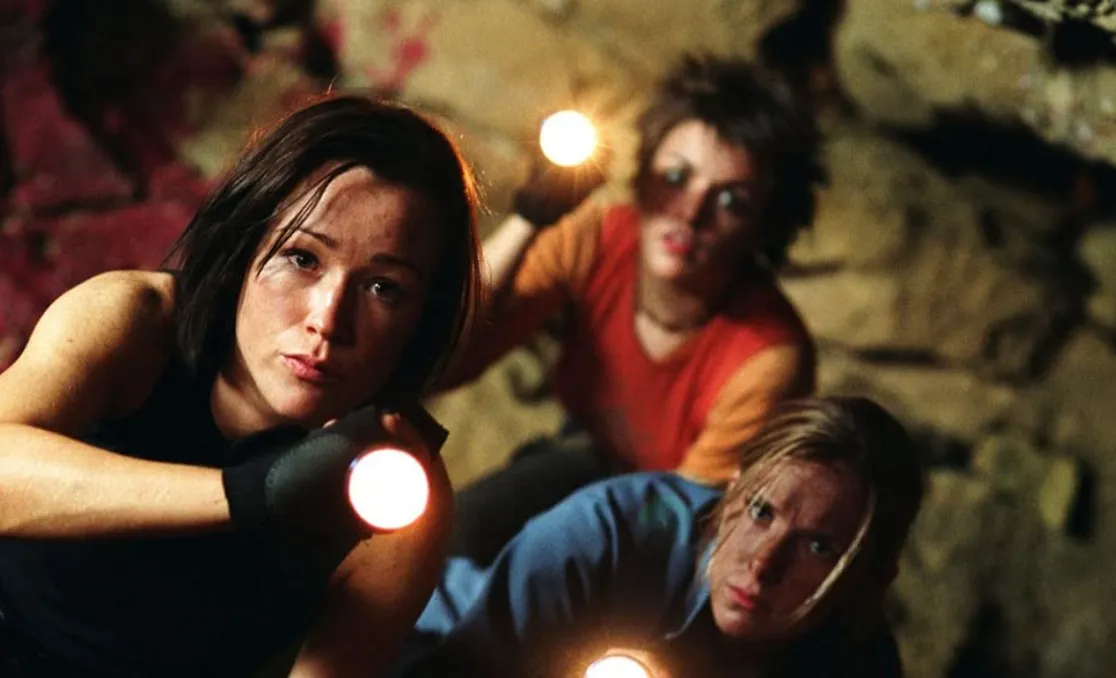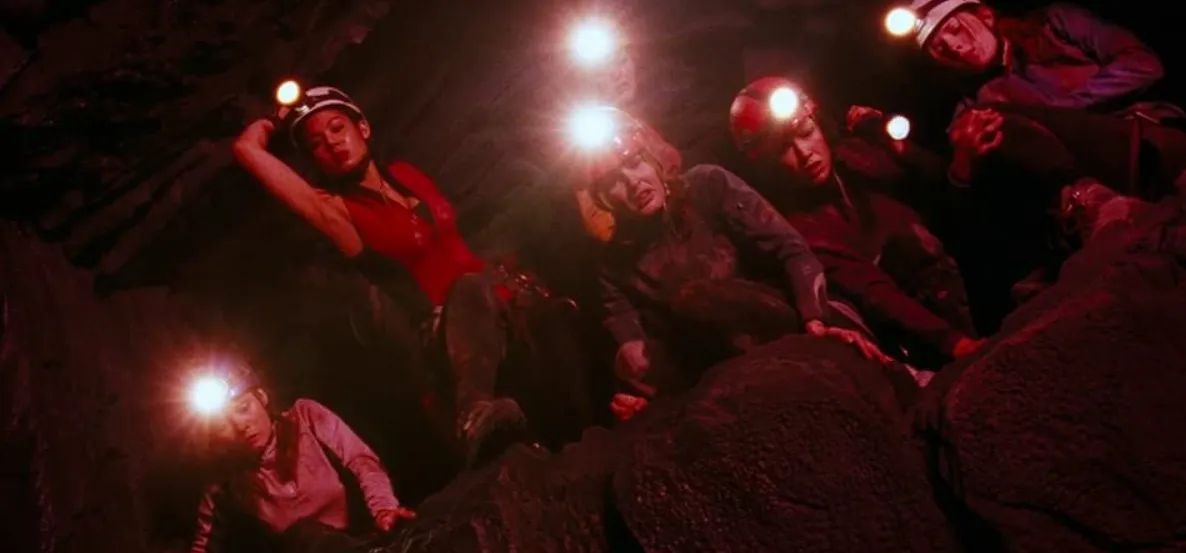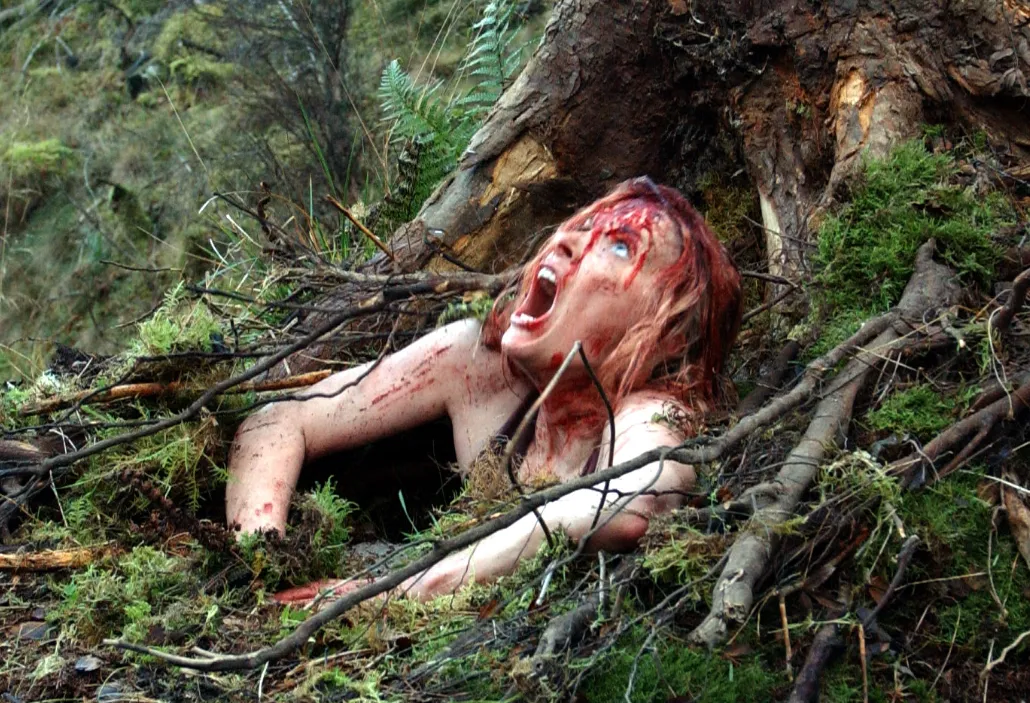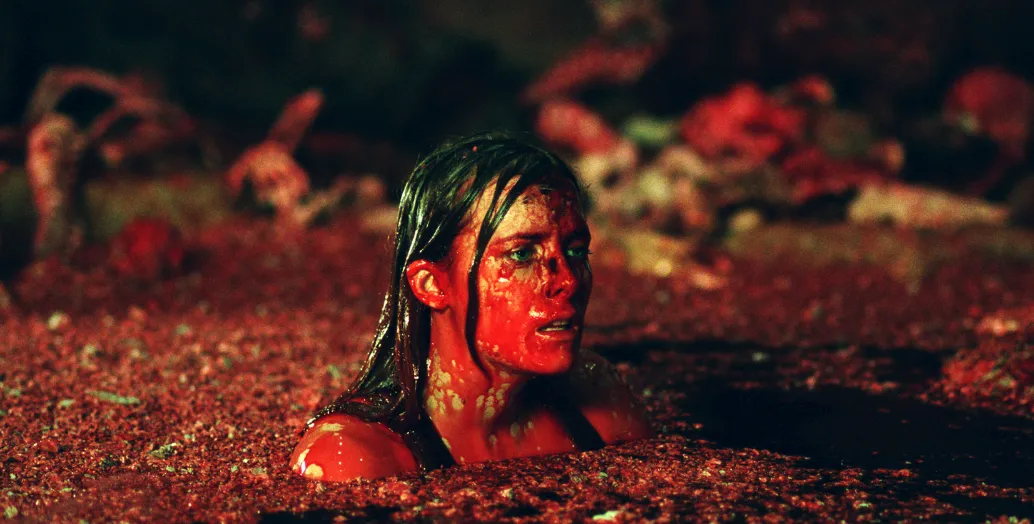Very few horror films actually scare me, and the 2005 film “The Descent” is one of the rare films that actually leaves me trembling. Written and directed by Neil Marshall, who also wrote and directed “Dog Soldiers” (2002) and “Doomsday” (2008), “The Descent” is by far Marshall’s best film. The film is simply a survival film, which makes it a very effective horror film. 6 women enter a cave system and find themselves trapped, then become hunted down by some strange humanoid creatures that live deep inside the caves.
The horror isn’t supernatural; there is no mad man in a mask, and there’s no extra-terrestrial threat invading. Instead, the ‘monster' is something more primal, more human. The film’s horror also comes from the fact of the location and setting of the story…a dark and very claustrophobic cave. If you suffer from Speluncaphobia then this is definitely not a film for you.

The film starts off bloody and traumatic, and there’s a sudden shock of violence that knocks the viewer back. We are first introduced to our main characters, Sarah (Shauna Macdonald), Juno (Natalie Mendoza), and Beth (Alex Reid), who are all thrill seekers and are currently whitewater rafting together. When back on land, there appears to be some sexual tension between Juno and Sarah’s husband Paul, and whilst Sarah seems oblivious to this and is far more interested in interacting with her daughter Jessica, Beth is more aware that there’s something going on between the two. Before we can get a chance to get accustomed to Paul and Jessica, they are killed in a car accident. Sarah is the only one to survive.
As you can imagine, Sarah is left traumatized by the accident. And when the film flashes forward a year, she seems distant and distracted from the rest of her friends. She has reunited with Juno and Beth at a cabin in the Appalachian Mountains of North Carolina for a spelunking adventure. Three other friends join them, Sam (MyAnna Buring), Rebecca (Saskia Mulder), and newcomer Holly (Nora-Jane Noone). Already, we are on edge as the location of the cabin seems so remote and isolated. If the women were to get into any form of trouble then who would come looking for them?

The trip into the cave goes well. Until Sarah becomes stuck in a narrow passage and it begins to collapse on her. Luckily, she escapes but their exit is gone and the only option is to venture deeper into the cave system. Quickly the women discover they’re not alone. The caves belong to several humanoid creatures, and they aren't pleased to discover their home has been invaded.
So, why is “The Descent” such an effective horror film? Well, as discussed by Roger Ebert the film’s visuals “evokes hellish visions, from famous paintings (Goya's Black Paintings, Fuseli's "The Nightmare") to gothic gargoyles and Dore's engravings for Dante's "Inferno.”...It's also a breathless plummet into the abyss where nightmares are realized, a descent into primal chaos and madness.” By having our main characters quickly descend into animalistic brutality, it manages to shock the viewer, who is left wondering about how quickly they would lose their own humanity. The decision to use red flares and green glow sticks to light up the caves, also helps to create that **nightmarish/hellish abyss **that Ebert refers to in his review.
“The Descent” feels like an ‘old school’ horror film from the 1970s/80s era of cinema. Marshall even cites “The Texas Chain Saw Massacre” (1974) and “Deliverance” (1972) as inspiration. The film gradually builds on the tension and fear, and the scenario that the characters find themselves in, is believable and the stakes are high. In an interview, Marshall stated the following “We really wanted to ramp up the tension slowly, unlike all the American horror films you see now. They take it up to 11 in the first few minutes and then simply can't keep it up. We wanted to show all these terrible things in the cave: dark, drowning, claustrophobia. Then, when it couldn't get any worse, make it worse."”

By setting the film in a cave, Marshall taps into our primal fears of the dark. Not only does the film cleverly plays on our fears of enclosed spaces (12.5% of the general population suffer from claustrophobia) but it also plays on our fear of what lurks in the darkness. Approximately 11% of the general population suffer from nyctophobia. Our environment appears vastly different when we can’t see it properly, and as humans are not nocturnal by nature, we are more cautious about what predators are lurking in the darkness.

The monsters of the film are known as “crawlers” and they are truly monstrous because they so closely resemble humans but have evolved into something far more terrifying. There’s very little explanation to what the crawlers are exactly, but we can assume that they are the result of humans remaining in the caves and evolving to the environment. As discussed in a piece from Screen Rant, “By leaving their origin story simple and vague, the creatures become even more terrifying. Without an origin, they're chaotic and unpredictable — that makes them the ultimate predator.”
What I find so disturbing about the crawlers is the fact that they have become cut off from the rest of civilization and have essentially evolved into nothing more than predators. It’s a warning to us of what can happen if we become truly isolated from society. In a brilliant move by the director and the rest of the crew, they kept the creature design hidden from the actresses prior to filming, in order to allow for natural tension.
Even though the main characters are all women, the film doesn’t feel like it’s doing this as an attempt to do a virtual signal. Instead, the female characters are fully developed with flaws and weaknesses. They may be physically fit because of their hobby, but they aren’t presented to us in the way that certain female characters have been in the past few years in other films. Instead, we know that these characters are vulnerable and they’re mortal. They will suffer and have to endure throughout their fight for survival. There’s no “girl power” moments where they all team up and make some kind of statement.

The acting in the film is very noteworthy. There’s an underlying impression of bitchiness which feels believable (trust me, women can be just as competitive as men and can also banter with each other). I especially love the power dynamics between Juno and Sarah, and their relationship feels less like a friendship and more like a rivalry. Both women have the ‘final girl’ mentality but ultimately it is Sarah who emerges as our traditional ‘final girl’. The scene in which Sarah falls into a pool of blood and emerges out, completely ‘transformed’ in terms of her attitude and determination to survive, is a wonderful homage to “Apocalypse Now”. What I simply adore about this film, is that it’s obviously made by someone who appreciates cinema.
I could keep on writing this review, but I think it would be best for you to go and seek this film out and experience it yourself. Yes, it’s truly terrifying and will give you nightmares but I think it’s well worth a watch. Just think twice before venturing into any caves…
Sources used: https://www.rogerebert.com/reviews/the-descent-2006 https://www.healthline.com/health/nyctophobia https://www.theguardian.com/theguardian/2005/jul/08/2 https://screenrant.com/descent-movie-creature-crawlers-explained/